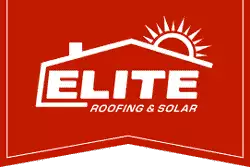When it comes to commercial roofing solutions, most businesses opt for low slope roofing options to fit their needs. Why? For several reasons: low slope roofs tend to be cheaper to install, maximizes square footage, and are generally more practical than steeper roofs typically seen in residential buildings. What many folks don’t realize, however, is that there are several options when it comes to low slope roofing materials. At Elite Roofing & Solar, our team has installed hundreds of low slope roofs throughout Colorado, gaining firsthand experience with the various materials involved in these applications. In today’s post, we’re going to dive into the different options available for use in these practical roofing systems.
What is a low slope roof?
In terms of precise specifications, a roof is considered low slope if its slope is less than or equal to 3:12 – that is, if it rises three inches or less for every foot of length, which is an angle of 14 degrees. Confusingly enough, these roofs are also sometimes referred to as flat roofs. But don’t be fooled: all roofs must have at least some slope to allow water to drain, and the minimum slope for a roof is generally 2%.
Why install a low slope roof?
One major reason low slope roofs are favored for commercial use is cost efficiency. Low slope roofs tend to require less roofing material to cover a given area, and they can be installed more quickly than steeper roofs. In addition, a steeper roof simply isn’t possible for many large commercial buildings. Due to the usual width of such buildings, the peak would need to be extremely tall. Finally, low slope roofs maximize interior space (which is useful for storage) and allow for necessities such as heating and cooling equipment to be installed on top of them.
What options are there for low slope roofing materials?
There are surprisingly many materials that can be used in low slope roofing projects. Below, we’ll discuss three of the most commonly used materials: PVC, EPDM, and TPO.
PVC
For years, PVC membrane was the most popular low slope roofing option out there. This is a single-layer thermoplastic membrane, and pieces of this material are rolled out and heat-welded to form a watertight seal. It tends to be quite durable and long-lasting, but PVC membrane is often quite costly compared to other materials. While other materials have since caught up to it in terms of popularity, PVC is still a good option for commercial roofing.
EPDM (Ethylene Propylene Diene Monomer)
Also referred to as a rubber roof, EPDM is a more cost-friendly low slope option in terms of commercial roofing. These systems last quite long, and while the seams are glued together (rather than heat-sealed), the loss in terms of water resistance is made up for by the ease and low cost of repairs for EPDM roofs. Along with PVC, this tends to be a highly popular low slope roofing material.
TPO (Thermo-Plastic Olephine)
The newest material among the these popular single-layer options is TPO, which was conceived as a material that would balance the durability of PVC with the cost-effectiveness of EPDM. In general, it achieves this quite nicely, with seams that are far more watertight than those found in EPDM roofs at a much lower cost than a PVC membrane. An additional benefit of TPO roofing is its energy efficiency. The color of a roof matters when it comes to reflecting summer heat, and TPO is more readily available in light colors than its counterparts – enabling business owners to save on summer cooling costs.
Elite Roofing & Solar Offers Popular Low Slope Roofing Options
At Elite Roofing & Solar in Denver, our business cares about yours – and our team has installed hundreds of commercial low slope roofs across Colorado over the years. We offer a wide range of roofing materials, including low slope roofing options such as EPDM and TPO, and our experienced team of roofers has your business covered. If you’re still not sure which is the right low slope roofing option for you, contact us today! We’re happy to share our expertise and help you make you make the best roofing decision for your business.







